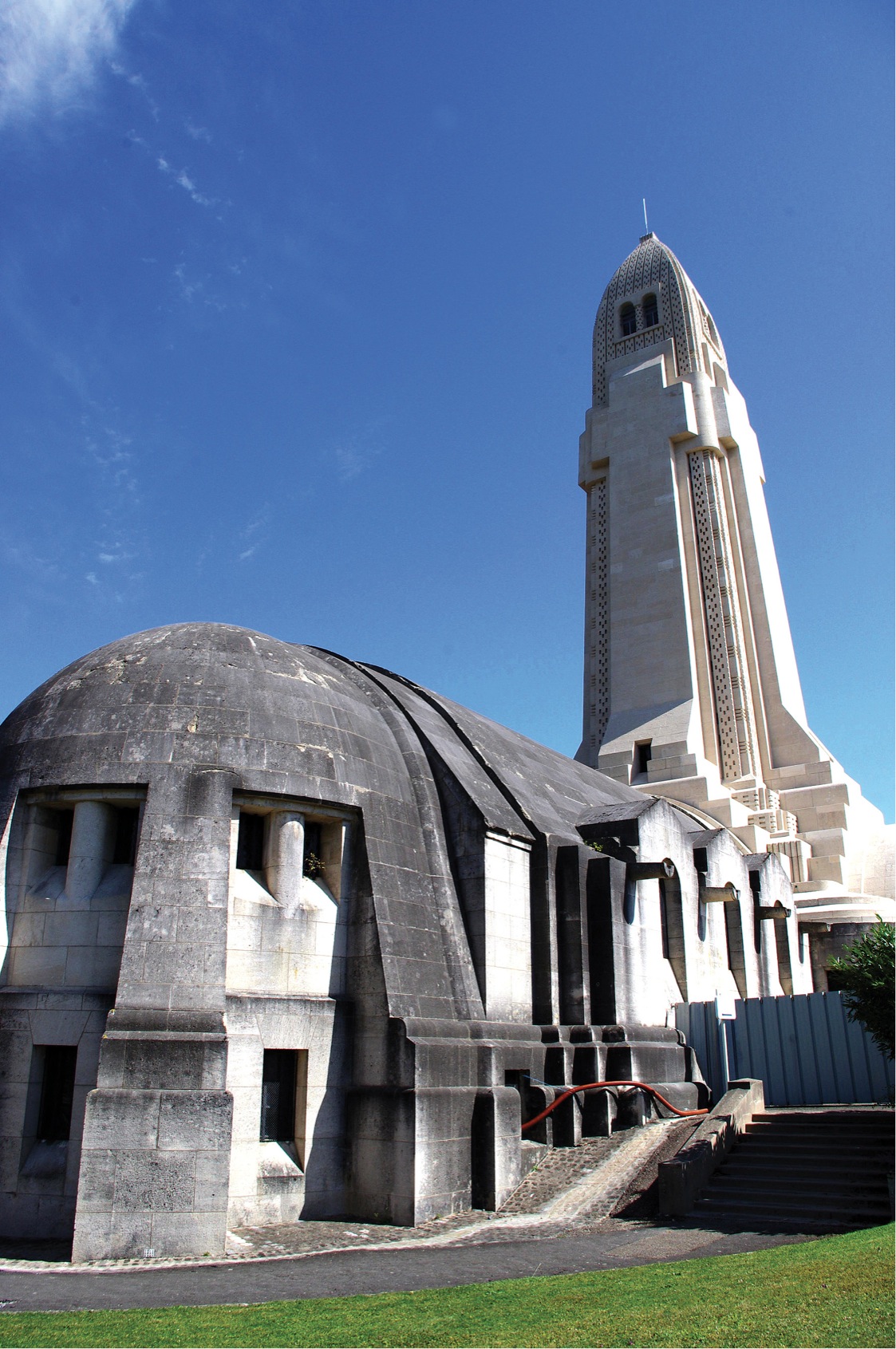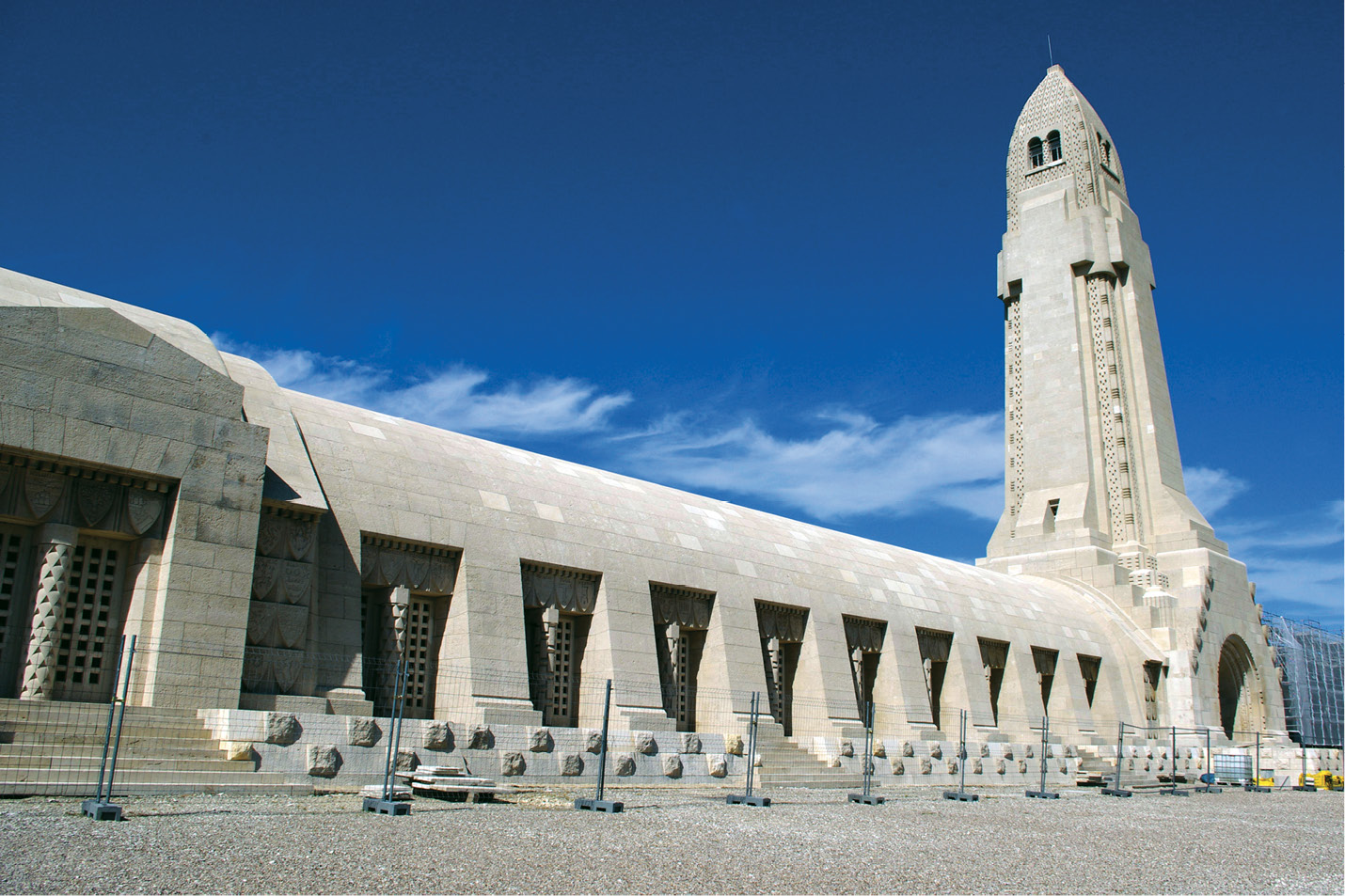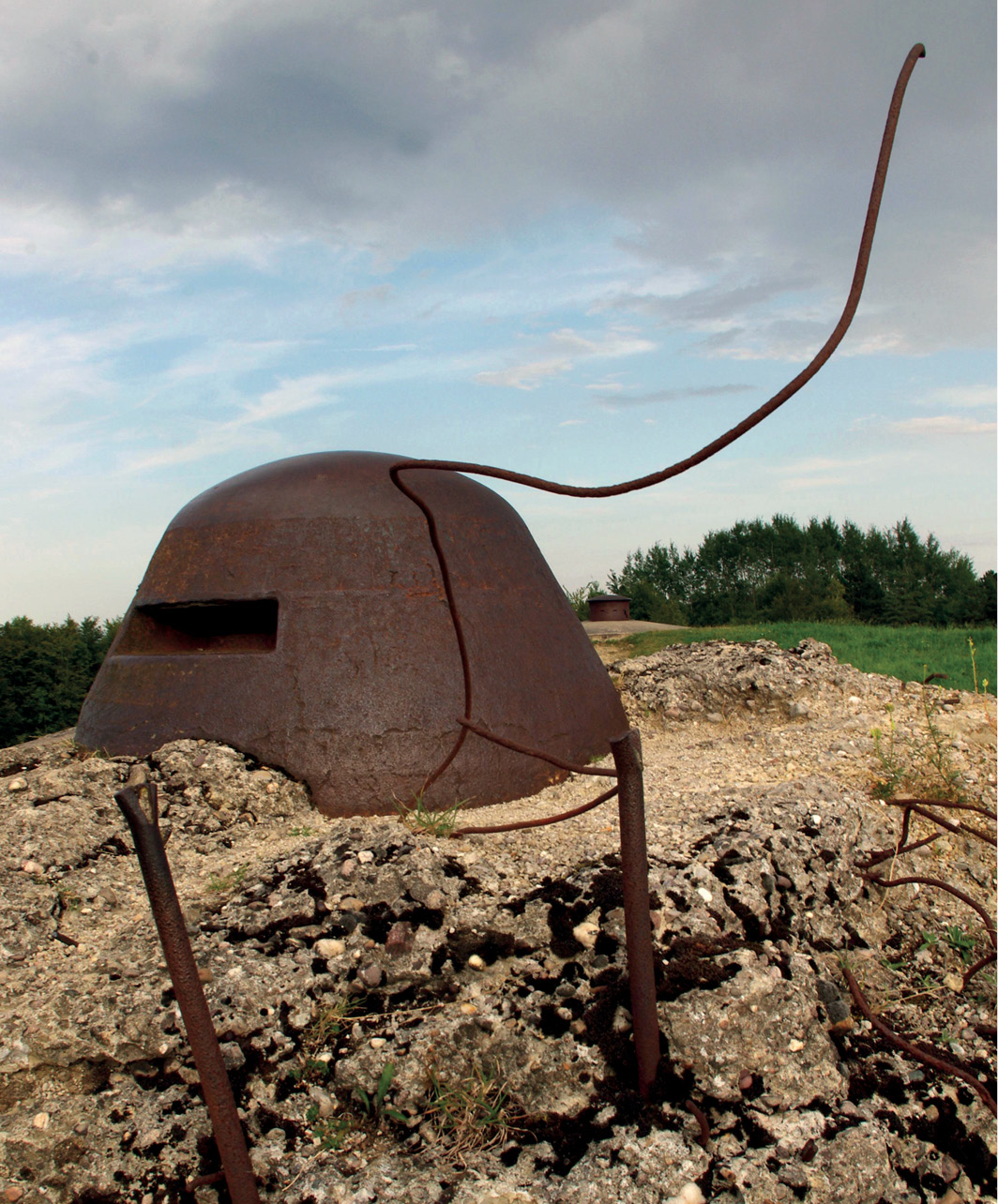56
Douaumont Ossuary
Date of construction: 1932
Location: National Monument, Douaument, Verdun, France

THE BATTLE OF VERDUN raged from February 21 to December 18, 1916. With casualty figures of at least 700,000, it was one of the bloodiest battles in history. For the French it is seen as the defining battle of the war. The initial German offensive had severely pressed the French but it was the defenders who won, their ring of defenses having held out against the mass attacks—the German mincing machine was struggling to cope in the face of the efficiency of the supply lines laid and developed by Pétain, then commander of the French 2nd Army.
Central to the defense of the city were the forts and defensive positions arranged as if in a letter “H,” the forts holding the high ground. Douaumont took its name from a village just to the west, which would be one of several to be wiped off the face of the earth by the battle. It was the largest of the forts, and it occupied a ridge that joined with the defense works at the Ouvrage de Thiamont and Ouvrage de Froideterre. To the south of this line was the Fort de Vaux, a smaller artillery fort that was nevertheless in the front line, connecting to the Fort de Souville in the west. Both ridges were connected by another line, through Fleury. Though Fort Douaumont fell early in the battle, on February 24, the other defense works held, with Vaux the most advanced position. The French counterattacks of May failed to recapture Douaumont; and with a renewed German offensive phase in June, Vaux was to fall on June 7, following a harrowing battle in the confined spaces and corridors of the fort. Assaults with diphosgene or “green-cross” gas shells on French artillery positions helped the German troops in their forward pressure, which flowed toward Souville and the defensive works at Froideterre. This was the high-water mark of the German offensive, which reached Souville on July 12, 1916.
The Douaumont Ossuary is a monument to the men who toiled in the Battle of Verdun. With ossuaries being the final resting place of human bones—a common conception in Catholic countries—it would be no surprise that such a building would be constructed on a battlefield so thickly populated with the missing bodies of the men of both nations that fought there. The job of gathering the remains started in 1918, when the Bishop of Verdun first mooted the idea of building such a monument. The first stone of the building was laid in 1920 by Marshal Pétain, and was to be built into a magnificent edifice of seventeen tombs set in a 137m-long cloister, a chapel and a tower that would look over the “murdered nature” of the Verdun battlefield. The tombs contain the remains of 130,000 soldiers who have no known grave. It is a sobering place and can be no better remembrance of the 300,000 men who died here.
At Verdun, the tide turned in favor of the French in July. First, the Anglo-French Battle of the Somme had opened to the north, diverting German resources away from the battlefront. The Germans were exhausted in their attempts to capture Souville and the town itself; and when the French began their offensive phase under General Nivelle in October, the result was the recapture of the two forts that came to symbolize the grinding pressure of this battle: first Douaumont and then Vaux. The battle had expended the men and resources of the two enemies—and had left the battlefield strewn with many bodies, whose bones now lie intermingled under the magnificent edifice that is the Douaumont Ossuary.

